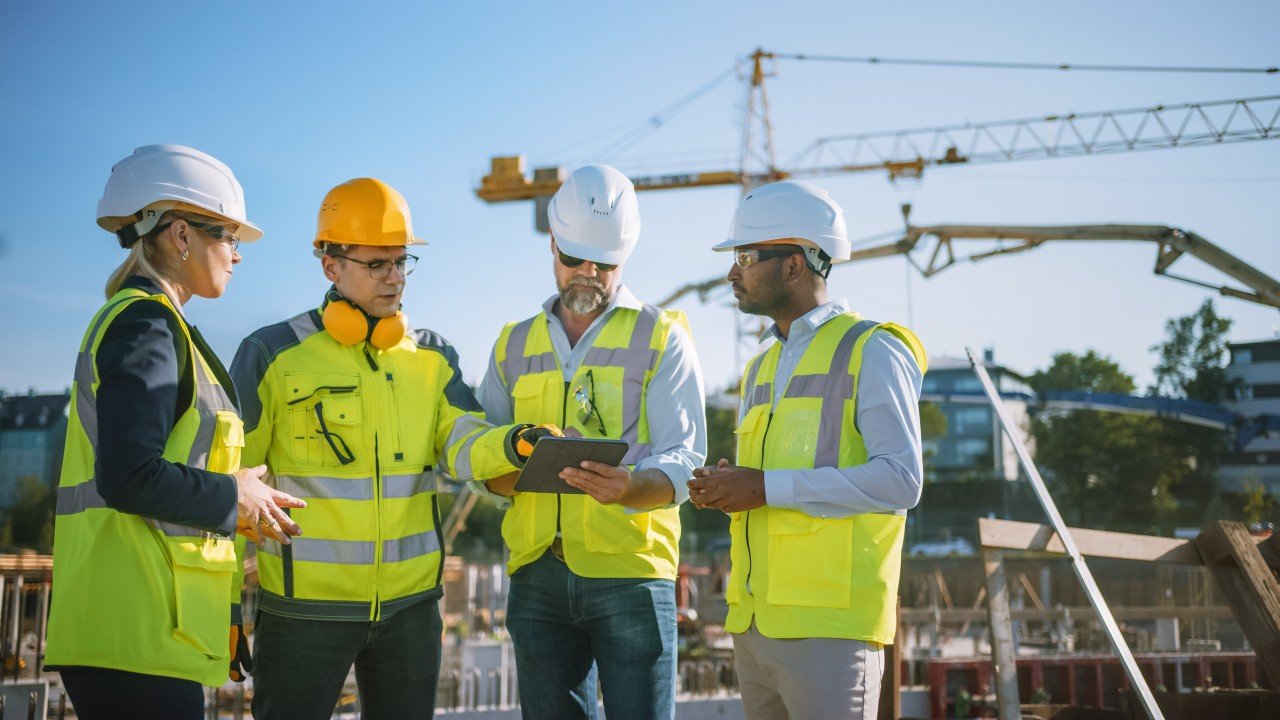Enhancing public safety in infrastructure projects is crucial for ensuring the well-being of communities. Infrastructure projects, such as roads, bridges, and public buildings, play a vital role in our daily lives. However, they can also pose safety risks if not planned and executed properly. In this article, we’ll discuss effective strategies to enhance public safety during infrastructure projects.
Conduct Thorough Risk Assessments
The first step in enhancing public safety in infrastructure projects is conducting thorough risk assessments. By identifying potential hazards early, project managers can implement strategies to mitigate these risks. This includes evaluating the site for environmental concerns, structural challenges, and public accessibility issues. Regular risk assessments throughout the project help ensure ongoing safety and allow for quick adjustments if new risks arise.

Incorporate Safety Training for Workers
Another important aspect of enhancing public safety in infrastructure projects is ensuring that all workers receive proper safety training. Workers should be trained in the use of personal protective equipment (PPE), safe machinery operation, and emergency response procedures. Regular safety drills and refresher courses can keep safety top-of-mind for everyone on the job site. This not only protects workers but also minimizes risks to the public.
Engage the Community
Community engagement is vital for enhancing public safety in infrastructure projects. Keeping local residents informed about the project timeline, potential disruptions, and safety measures can foster trust and cooperation. Community meetings, newsletters, and social media updates are effective ways to communicate with the public. Additionally, soliciting feedback from the community can help identify specific safety concerns that may not be apparent to the project team.
Implement Traffic Management Plans
Infrastructure projects often impact local traffic patterns, making it essential to implement effective traffic management plans. These plans should include clear signage, detours, and traffic control measures to guide motorists and pedestrians safely around the construction site. By planning for smooth traffic flow and minimizing disruptions, you can greatly enhance public safety during infrastructure projects.
Utilize Advanced Technology
Incorporating advanced technology can significantly enhance public safety in infrastructure projects. For instance, using drones for site surveys can provide real-time data and reduce the need for workers to enter potentially hazardous areas. Additionally, 3D modeling and simulation software can help visualize project impacts, allowing for better planning and risk management. Embracing technology can lead to safer and more efficient project execution.
Establish Clear Communication Channels
Clear communication is vital for enhancing public safety in infrastructure projects. Establishing designated channels for reporting safety concerns and issues can ensure quick responses to potential hazards. Whether through a hotline, an online portal, or regular safety briefings, keeping communication open encourages workers and community members to share their concerns. This proactive approach helps prevent accidents and enhances overall safety.
Monitor Environmental Conditions
Environmental conditions can change rapidly and pose safety risks. Therefore, monitoring weather and environmental conditions is essential for enhancing public safety in infrastructure projects. Heavy rain, strong winds, and extreme temperatures can affect construction activities and increase hazards. By staying informed about weather forecasts and environmental factors, project managers can adjust schedules and implement safety measures to protect workers and the public.
Conduct Regular Safety Inspections
Regular safety inspections are critical for maintaining a safe work environment. These inspections should assess equipment, work practices, and site conditions to identify potential hazards. By conducting inspections at various stages of the project, you can ensure compliance with safety regulations and implement necessary improvements. This proactive approach minimizes risks and enhances public safety throughout the infrastructure project.
Plan for Emergency Response
Having a solid emergency response plan is essential for enhancing public safety in infrastructure projects. This plan should outline procedures for various scenarios, including accidents, natural disasters, and health emergencies. Conducting drills and training workers on emergency procedures can ensure that everyone knows how to respond effectively if an incident occurs. Being prepared not only protects workers but also reassures the public that their safety is a priority.
Evaluate and Learn from Past Projects
Finally, evaluating past infrastructure projects can provide valuable insights for enhancing public safety. Analyzing previous successes and failures helps identify effective strategies and areas for improvement. By learning from past experiences, project managers can implement best practices and avoid repeating mistakes in future projects. Continuous improvement in safety measures leads to better outcomes for both workers and the community.
Conclusion
Enhancing public safety in infrastructure projects is a multifaceted approach that requires careful planning, community engagement, and ongoing evaluation. By conducting thorough risk assessments, providing safety training, and utilizing technology, you can create a safer environment for everyone involved. Remember, public safety should always be a top priority in any infrastructure project. With these strategies, we can work together to build a safer future for our communities.




